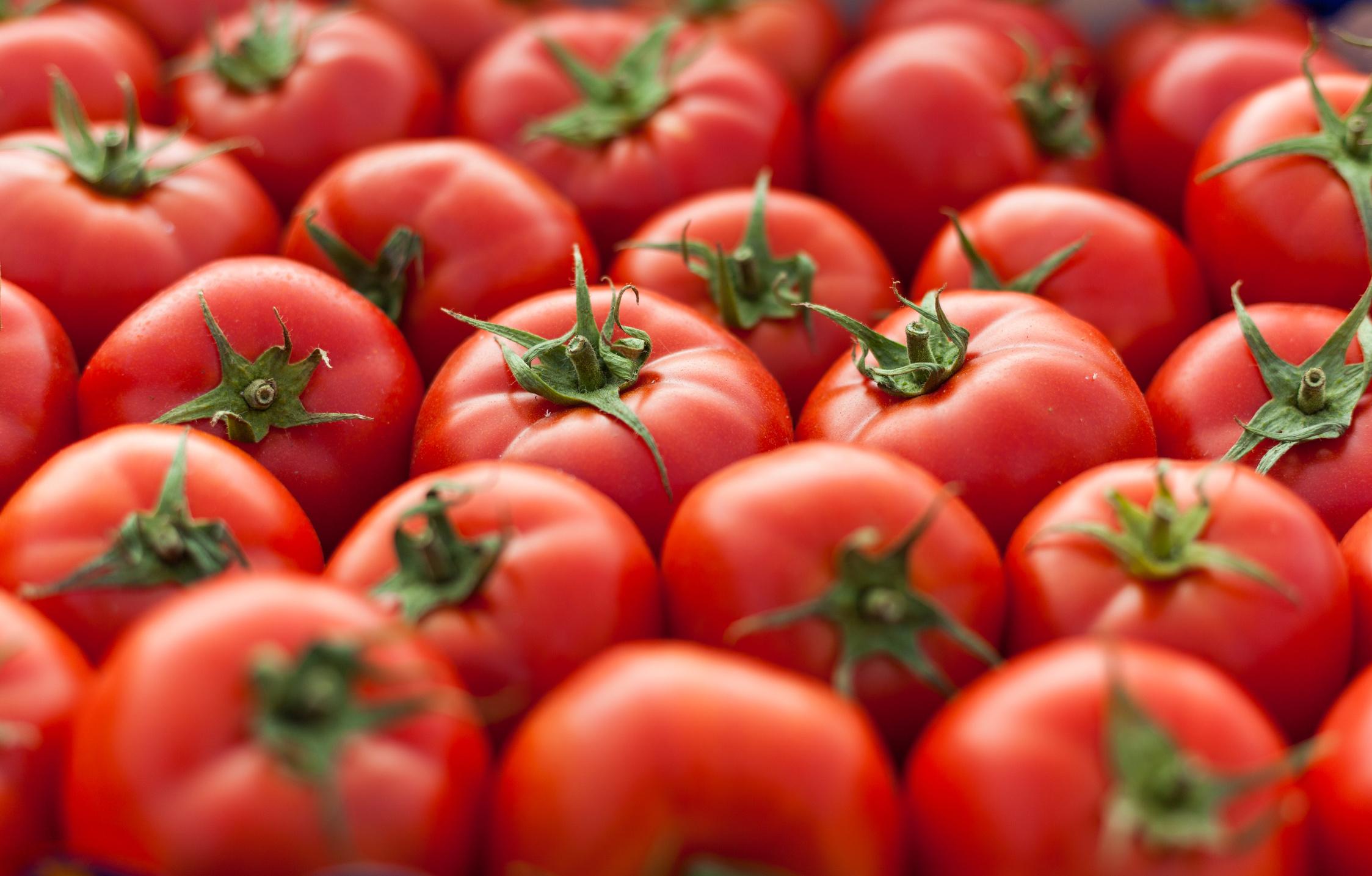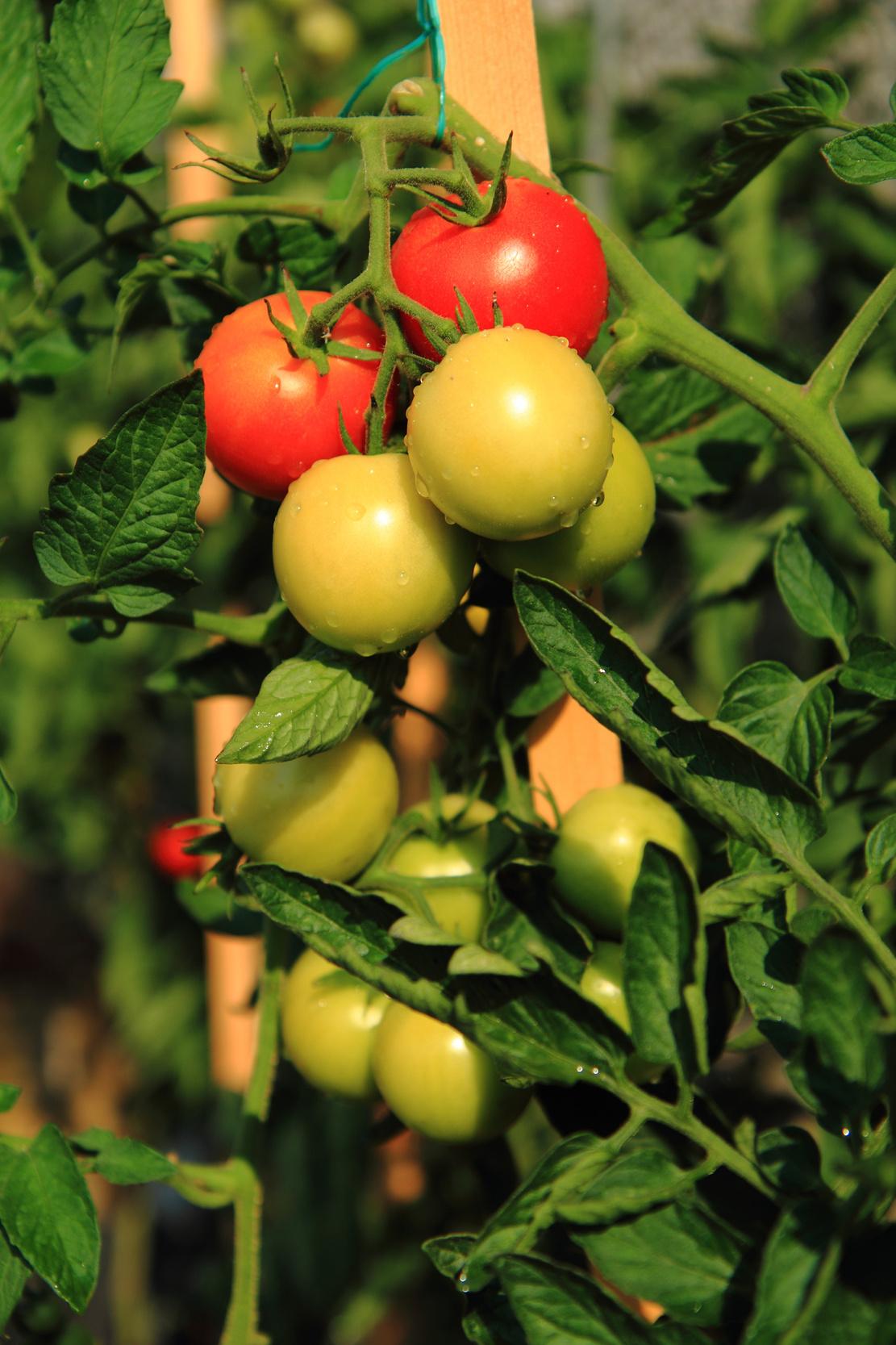
7 minute read
Tips for Growing Tomatoes
Tips for Growing Tomatoes in San Antonio, Texas
by Darinka Hudson
San Antonio is a great place to grow a food garden, and tomatoes are at the top of its growing list. Tomatoes love attention, but figuring out exactly what that means can be daunting. That’ s why I’ ve come up with 10 steps to help you grow them abundantly!
1. Have fun with your garden and be yourself! Dance, sing, pray, listen to music, practice yoga, or read. Whatever you do, have fun with your garden and enjoy yourself.
2. Grow in a raised bed or large containers. The soil in San Antonio is void of nutrients because it’ s mainly caliche, a composition of clay and rock. A raised bed makes it easier to establish the rich, loose soil that tomatoes require.
You ’ll need a depth of at least 18” of soil so that the roots have enough room to grow. These plants can get very tall, and the roots need sufficient depth to keep the plant healthy. Tomatoes need a lot of nutrients, and are called heavy feeders.
Therefore, make sure you plant them in soil made of rich compost and gardening soil. 3. Place the bed in a south facing part of your garden that gets at least eight hours of sun daily. Tomatoes require a lot of sun because they use it to make the energy they need to grow. A South facing garden will get the most amount of sun throughout the day as it moves across the sky from east to west.

4. It gets hot in San Antonio! During periods of no rain, water your tomatoes every day and try to get them hydrated in the morning. This keeps your tomato plants hydrated throughout the hot day.
Make sure to water at soil level, and do not get your tomato plants wet. Water droplets act like a magnifying glass during the day, and the sun will burn the leaves. Also, getting leaves wet at night can cause mold to grow. Better to water deeply and less frequently, than shallow and daily.
5. After the first six weeks, start feeding your tomatoes. They grow fast, and get very hungry! Add a small amount of all purpose fertilizer around the bottom of the plant every two weeks.
6. Pinch off the first bunch of small flowers.
This allows the plant and its roots to grow and get stronger.
7. Once the first bunch of flowers are pinched off, add a tablespoon of Epsom salt to the soil at the base of each tomato plant. This stimulates more flowers to bloom, which allows the plant to produce more fruit.
8. Once the tomatoes are blooming, gently tap or shake the plant for ten seconds every day. This helps to pollinate the flowers, and really helps fruit production so you can get more tomatoes.


9. Trim any leaves that are touching the ground as they serve as bridges for bugs to eat your delicious tomatoes.
10. Mulch your beds with natural wood chips or straw. This helps the soil retain water and nutrients from the San
Antonio heat.
I wish success for you in every way, and particularly with your tomatoes! Remember, the most important thing is to enjoy this process and be open minded. Growing tomatoes is an act of patience, self love and self growth. Savor the process of learning to cultivate your own food, have fun, and enjoy the fruits of your labor!
A Guide to Cultivating Soil Health

by Alma Rominger
Are rocks healthy? Sand? Clay? Of course not! In order to be healthy, something must first be alive. That’ s why when we talk about healthy soil, we ’ re talking about the health of the soil microbiome, the community of microorganisms living beneath the soil. A robust soil microbiome is the foundation of healthy soil and plants, and there are several ways to cultivate its health.
The soil microbiome improves soil structure and optimizes plant health. One way the soil microbiome does this is by aerating the soil and increasing water retention. More than this, beneficial bacteria and fungi help break down vital nutrients to make them more accessible to plants. Mycorrhizal fungi will adhere to plant roots and can expand their surface area up to 1,000 times, giving your plants access to nutrients they otherwise wouldn ’t have.
Keeping a healthy soil microbiome will also give your plants an added shield of immunity against disease and pests. Beneficial microorganisms have developed defense mechanisms, such as secreting chemical compounds, that will protect your plants from plant diseases and invading pests alike.
Soil is full of life—beyond plant roots, there lives a rich microbiome, an ecosystem of fungi, bacteria, and mesofauna like earthworms, nematodes, and insects, all living in beautiful symphonic symbiosis. Each plays a part in improving soil structure and soil fertility, so keeping these beneficial microbes happy is key to improving soil health and optimizing plant growth.
Like all living things, healthy soil needs air, water, food, and shelter. So let’ s break it down, need by need, to understand how we can best improve and maintain our soil’ s health.
Air: You want to aerate your soil without disturbing the microbiome or exposing it to the sun or wind, where it can dry up and die. An excellent way to aerate your soil is by using a broadfork or pitchfork. At the beginning and end of the planting season, stick your tool into the first six or so inches of soil and move it back and forth to create holes in the soil, without digging the soil up or turning it over. The holes will help to expose the microbiome to much needed oxygen. Adding organic matter in the form

of compost will attract earthworms, nematodes, and beneficial insects that help create air pockets in the soil, so using compost regularly will also help in your aeration efforts. Once aerated and composted, treat your garden bed like a sanctuary and try not to compact the soil by stepping on it or using heavy machinery over it.
Water: It’ s important to keep your soil at an optimum moisture level. Microbes and plant roots cannot access oxygen when the soil is too saturated for too long. And of course, leaving your soil too dry will stress and kill microorganisms and plants alike.
When watering soil, you ’ re shooting for a healthy medium— field capacity is that sweet spot in which the spaces between the soil particles contain both air and water. Optimizing moisture content will depend on your soil type and the kinds of plants you ’ re growing, so it’ s important to research the kind of soil you ’ll be working with and the kinds of plants you want to grow. Best watering practices include watering deeply and infrequently in the morning using drip irrigation or watering ollas to keep the water close to the soil to minimize evaporation.
Food: Soil LOVES compost! Compost introduces organic matter, macro and micronutrients, and more beneficial microbes into the soil. Unlike synthetic fertilizers, compost releases nutrients slowly as the microorganisms digest it, so consider it a long-term soil-ution!

In our warm climate, it’ s best to add a 1-3 inch layer of compost at least twice a year. You can also add it around established flowering plants and trees to boost nutrients before fruiting. Frequently add compost to sandy or compacted areas to more quickly amend soil structure. One of the best and fastest ways to amend your soil is by burying Bokashi-fermented food scraps, as they are a straight dose of organic matter and beneficial microbes. Bokashi is a composting method in which you ferment your food scrap collection in order to accelerate the breakdown of organic matter, control smells, and avoid pests. Since the Bokashi microbes have already predigested the organic matter, the easy-access nutrients will attract all the soil microbes to the yard.
You can ferment your own food scraps at home using a Bokashi starter or purchase fermented organic matter through companies like Compost Queens.
Shelter: After planting your seeds, you can cover the bed lightly with straw or leaves to retain moisture. Then once your seedling is a few inches tall, cover it with a 1-2 inch layer of mulch, hay, cardboard, or pine needles. This will protect your soil from drying out in the sun and prevent evaporation. Just be sure not to lay it on too thick as it can suffocate the soil underneath it.
In addition to optimizing plant growth, healthy soil helps to sequester carbon dioxide from the atmosphere and store it neatly underground where it’ s needed. Not only does healthy soil mean a healthy garden, it also makes for a healthy earth. So let’ s get to work!







